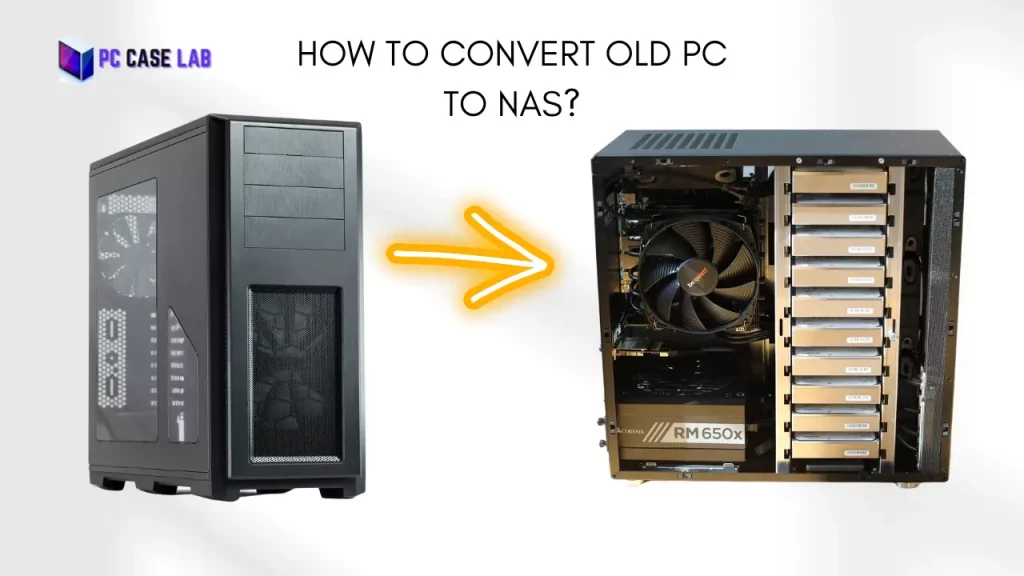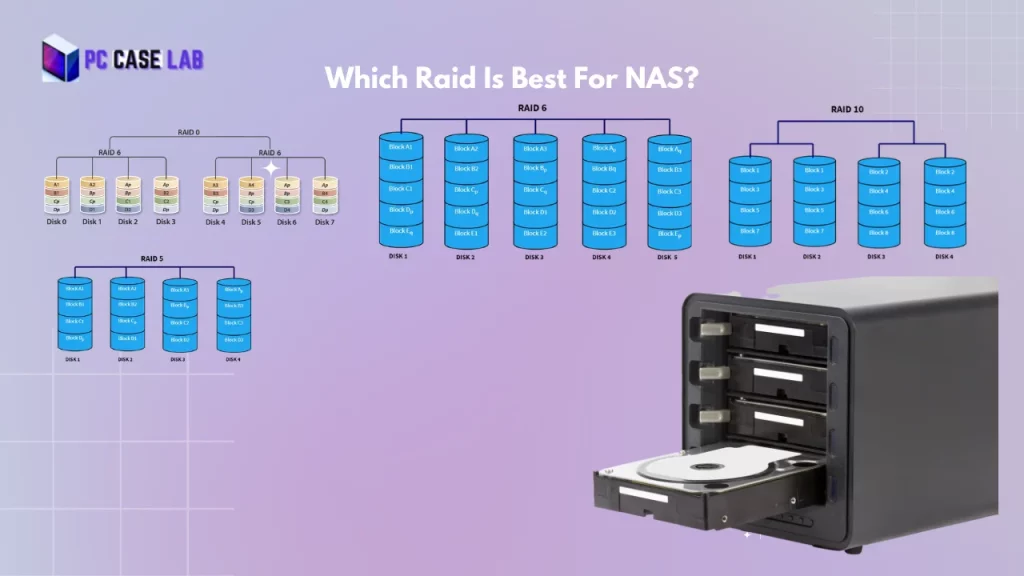A computer case also commonly referred to as a chassis, tower, system unit, enclosure or cabinet is essentially a shell that holds and protects all the vital components of a computer such as the motherboard, CPU, graphics card, memory, and other hardware parts.
The manufacture designed cases specifically to support, protect and store the internal components of a desktop computer ensuring their proper alignment, ventilation, and safeguarding against static due to computer on carpet and other potential external factors.
What Is Chassis In Computer Case?
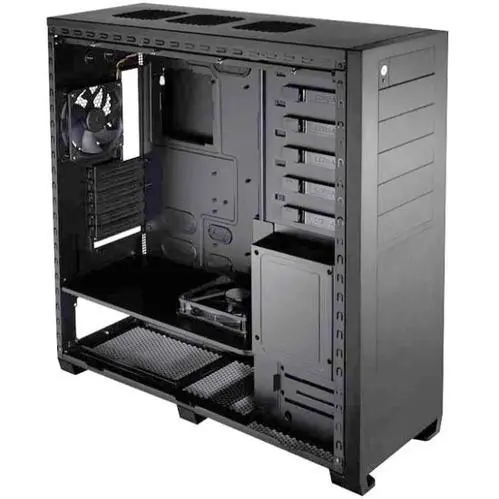
The chassis in a computer is essentially the frame or body that holds all the internal components such as the motherboard, hard drives, and power supplies.
It acts as a protective cover that shields the internal components from external factors such as dust, debris, and moisture.
Moreover, the chassis also helps to dissipate the heat produced by the internal components through the use of fans and heatsinks if the thermal paste is proper applied. Thermal paste has a limited lifespan which can vary, so timely maintenance and replacement is crucial for optimal PC performance and longevity.
All of these factors play a crucial role in preventing hardware failures, reducing the risk of overheating, and ultimately prolonging the lifespan of a computer.
Therefore, the chassis not only serves as a structural component of a computer but also as a key factor in maintaining and protecting its internal components.
What Are The Functions Of Computer Case?
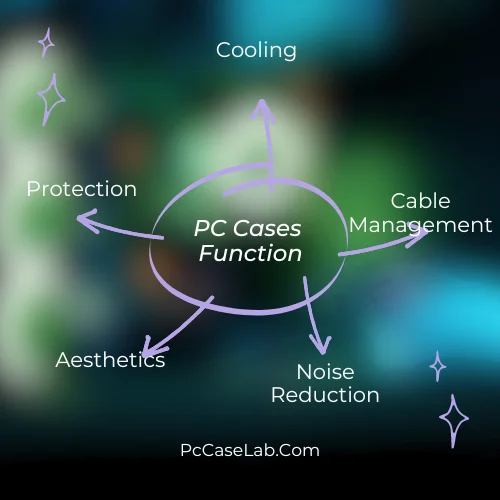
Protection
The primary function of a computer case is to protect and shield the critical computer hardware from external factors like dust, moisture, physical impact, electromagnetic interference, electrical interference and other forms of environmental hazards.
Cooling
As computers generate a lot of heat, computer cases come with built-in fans or ventilation systems to ensure proper airflow and heat dissipation. It helps to prevent overheating, which can damage the system components, and ensures optimal performance and longevity.
Cable Management
Computer cases also play a vital role in proper cable management. They provide sufficient space and organization options for the cables, which helps to eliminate clutter, optimize and improve airflow and cooling, and make upgrades and maintenance more accessible.
Aesthetics
Computer cases come in a range of designs and colors, which helps in the customization and aesthetics of your computer system. They are available in various shapes and sizes, including mid-tower, full-tower, and mini-tower, allowing the user to choose the one that suits their needs and preferences.
Aesthetics wise, you might want to consider investing in a transformer computer case with a unique design layout that sets it apart from other more common PC cases.
Noise Reduction
Many computer chassis come with thick, sound-dampening materials that help in reducing the overall noise generated by the system hardware components. It provides a quieter computing experience, especially for users working in shared environments like offices or homes.
What’s Inside the Pc Case? Computer Components
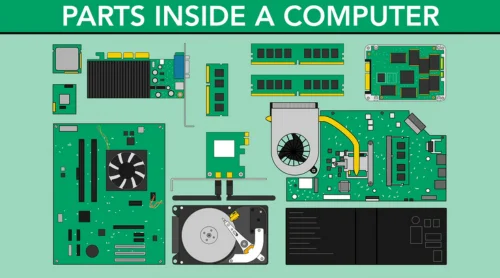
Inside the system unit, there are several computer components that work together to form the foundation of the computer’s processing power.
One of the primary components inside the system unit is the motherboard, which acts as the main circuit board that connects all the other computer components. The motherboard contains the CPU socket, RAM slots, and expansion slots for additional cards such as graphics or sound cards.
The CPU, or central processing unit, is the brain of the computer and is responsible for executing instructions and processing data. The CPU is typically mounted onto the motherboard and sits below a heat sink and rgb fans to keep it cool.
RAM, or random access memory, is the temporary storage that the computer uses to execute programs and store data while it is in use. The RAM slots are located on the motherboard, and the amount of RAM a computer has can affect its overall performance.
The hard drive is another critical component found inside the system unit. It is used to permanently store data and programs and is typically connected to the motherboard via a SATA cable. Cases comes with multiple internal drive bays that can be used for upgrading storage.
The power supply unit, or PSU, is responsible for providing power to all of the computer components inside the system unit. The Power supply is typically located at the back of the case and is connected to the motherboard and other computer hardware component with cables.
External bays are an integral part of computer cases that allow users to add or switch out various hardware components without opening up the case. These bays are located on the exterior of the computer case and can be accessed easily by the user.
Other hardware components can also be found inside the system unit, such as the graphics card, sound card, optical drives, and cooling fans. These computer components work together to ensure that the computer system unit functions correctly and provides the necessary power and performance for the user.
Computer Cases Form Factors :
Form factors are the physical dimensions and layout of a computer case. Different form factors are designed to accommodate different types and sizes of motherboards, power supplies, and other internal components. Here are some common form factors of computer cases:
1. ATX (Advanced Technology eXtended): This is the most common form factor for desktop computers. It measures 305mm x 244mm and provides space for up to seven expansion slots.
2. Micro-ATX: This smaller form factor measures 244mm x 244mm and is designed to fit in more compact cases. It typically has four expansion slots.
3. Mini-ITX: This is the smallest form factor and measures only 170mm x 170mm. It is designed for compact and low-power systems, such as home theater PCs.
4. E-ATX (Extended ATX): This larger form factor measures 305mm x 330mm and can accommodate up to nine expansion slots. It is designed for high-end gaming and workstation systems.
5. BTX (Balanced Technology eXtended): This form factor was developed by Intel as a replacement for ATX, but it never gained widespread adoption. It features a rotated motherboard, which improves air flow and reduces heat buildup.
Overall, choosing the right form factor for your computer case model is important in ensuring that all the components fit properly and that your system runs smoothly.
Types Of PC Cases
The types of computer cases can be broadly categorized into two main groups: desktop computer cases and computer tower cases. Below are the key features and differences between the two types:
1. Desktop computer cases are typically smaller and designed to sit flat on a desk. They are often used for home and office PCs and have limited expansion options. They are also typically less expensive than tower cases.
2. Tower computer cases are larger and designed to stand upright on the floor. They are used for more high-end and advanced systems and offer greater customization and expansion options. They generally offer more space for additional computer components, such as larger power supplies, multiple hard drives, and multiple expansion cards.
3. Tower cases can be further classified into mid-tower and full-tower cases. Mid tower cases are smaller and more affordable, while full-tower cases are larger and offer even more expansion possibilities.
4. Some other types of computer cases include cube cases, SFF (small form factor) cases, and HTPC (home theater PC) cases. Cube cases are smaller versions of tower cases with a cube-shaped design. SFF cases are even smaller, designed to be compact and portable. HTPC cases are designed specifically for media center PCs and often resemble AV equipment.
5. The material used for construction are also different. Some computer cases are made of plastic, while others are made of aluminum or steel. Each material has its own unique advantages and disadvantages.
In addition to the above points, it’s important to bear in mind that the choice of computer case will depend on personal preferences, intended use, and budget.
How has the design of computer cases evolved over the years?
Computer chassis have undergone numerous transformations both in terms of design and functionality.
Initially, they were bulky and served only as a protection for the internal components. Today, modern computers sleek designs with tempered glass, LED lighting, and better ventilation add to the aesthetics of the computer’s overall look.
With the evolution of technology, computer cases have also become more efficient, allowing for better cooling systems and faster processing speeds.
In short, computer cases manufacturers have come a long way from simple boxes to stylish and functional works of art.
Some popular computer brands have started implementing dust filter systems in their products, such as Corsair, Cooler Master, and Fractal Design.
With vast knowledge and research on how dust accumulates and affects the longevity of PC components, some of these brands now make it easy for users to clean and replace their filters regularly.
In Summary
So, what is a PC case? A computer case is more than just a protective housing. It is an essential component that performs critical functions like cooling, proper cable management, noise reduction, and customization, among others. Choosing the right computer case is crucial to ensuring the optimal performance and longevity of your computer system.
In the context of computer components, “case” stands for “Computer Aided Software Engineering”. However, when referring to the physical enclosure that houses the PC components, “case” stands for “computer case”.
The most important characteristic of a computer case is its ability to protect the computer’s components from external damage, dust, and other harmful elements. This ensures the safe operation of the computer and prolongs its lifespan. Additionally, a good computer case should have adequate ventilation and cooling to prevent overheating, and enough space to accommodate all the necessary hardware components.
I am a PC enthusiast with a passion for gaming and all things tech. With years of experience building and customizing PCs, I have become a go-to source for PC case reviews and gaming insights. I am dedicated to researching and writing about the latest trends and developments in the PC gaming industry, with a particular focus on PC cases. From budget-friendly options to high-end builds, I have the expertise to guide you through the process of selecting the perfect case for your needs. Whether you’re a beginner or a seasoned pro, my in-depth reviews and practical tips will help you make an informed decision.



